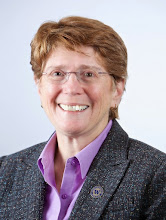It is well-known that eyewitness identifications can be mistaken -- even when the eyewitness sounds confident. Sometimes, in fact, the confidence comes from the way the identification was first made (e.g., if the police gave the impression that the a lineup surely included the guilty person).
What can be done to make the system better? A number of jurisdictions have adopted guidelines. One recent example is the State of Wisconsin's Model Policy and Procedure for Eyewitness Identification (adopted March 15, 2005), which not only lists the guidelines but summarizes the reasons for each recommendation.
Do guidelines like these make a difference? Yes. Hennepin County (Minneapolis) set up new procedures as a pilot project and studied the results. A recent article by the Hennepin County Attorney and an Assistant County Attorney concludes that the new procedures were successful: witnesses much less often identified one of the "filler" photos in a lineup (than in a comparable field study in California). Amy Klobuchar & hilary Lindell Caligiuri, Protection the Innocent/Convicting the Guilty: Hennepin County's Pilot Project in Blind Sequential Eyewitness Identification, 32 Wm. Mitchell L. Rev. 1 (2005)
Reducing the number of false identifications not only protects innocent suspects; it also protects the public by ensuring that the police keep looking for the actual perpetrator.
Eyewitness identification is just one of the topics being discussed at this weekend's Innocence Project conference. The leads to the two sources mentioned here were from Dr. Gary L. Wells, who spoke last night. Dr. Wells is a psychology professor at Iowa State University and one of the leading scholars in the area of eyewitness memory.
Categories: eyewitnesses, photo-spreads, empirical-studies, Wells, Innocence-Project, event, UW
Saturday, March 18, 2006
How to Improve Eyewitness ID Procedures
Subscribe to:
Post Comments (Atom)

No comments:
Post a Comment